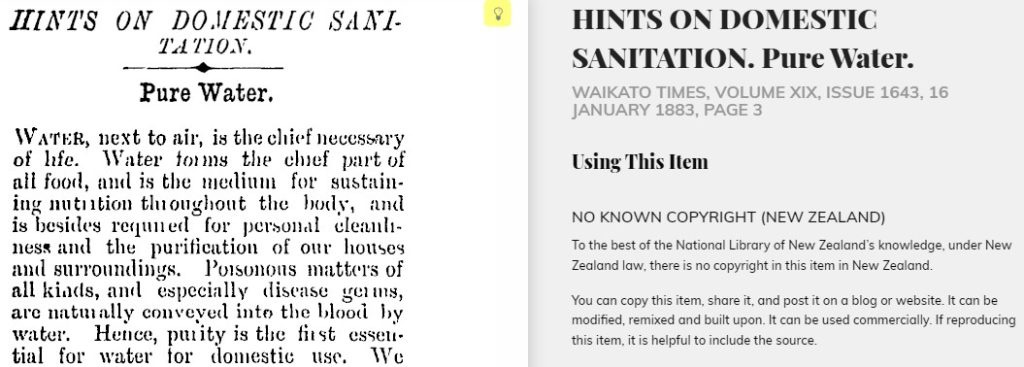The beginning of modern Town planning - Water
My notes on Germany 1648 to 1806 , Germany 1800 to 1840s , Waikato the golden age 1840s to 1850s , Waikato 1860s , Gentry & Speculators
In the early nineteenth century, as ‘cities grew, their hygienic conditions, already far from acceptable, became even worse’ (*Wagenaar P178). Before the nineteenth century Lewis Mumford in his 1938 book The Culture of Cities (link) wrote ‘crude sanitation is not necessarily bad sanitation (p44) ... as long as the open space and gardens remained, as long as the countryside was easily accessible to the dung-farmer, the normal smells of the medieval town were not more offensive than those of the farmyard; nor were the evils overwhelming’ (p46). During the 1830’s ‘cholera, a frightening new scourge ... made its first appearance in Europe’ (**Ladd p36). Although wealthier than any city had ever been before, London could not cope with its population growth. In 1848 and 1849, a cholera epidemic killed more than 14,000 people’ (Wagenaar p163)
*Town Planning in the Netherlands since 1800: by Cor Wagernaar
**Urban Planning and Civic Order in Germany, 1860-1914: by Brain Ladd

‘New York prided itself on leading the way here: the croton system, opened in 1842, was both a handsome piece of engineering and an intelligent means of combating some of the worst effects of urban overcrowding. The provision of pure, municipally supervised drinking water lowered the incidence of typhoid epidemics’ (Mumford p235). Meanwhile, ‘English sanitary reformers, the most prominent of whom was Edwin Chadwick [who in 1842 published a report on the ‘Sanitary Condition of the Labouring population of Great Britain’], successfully drew public attention to problems of water supply, drainage, and poor housing conditions in the cities, and linked them to epidemic diseases’ (Ladd p36). In 1847 William Budd learned of an epidemic of typhoid fever in Clifton, and identified that all 13 of 34 residents who had contracted the disease drew their drinking water from the same well (Wiki). The Broad Street cholera outbreak ... in 1854 London ... killed 616 people, is best known for the physician John Snow's study of its causes and his hypothesis that germ-contaminated water was the source of cholera, rather than particles in the air (referred to as "miasma"). In 1855 ‘Max von Pettenkofer published the results of his experiments tracing the spread of cholera to contaminated soil. Discovery of the bacterial causes of disease came only later, in the 1880s’ (Ladd p38).
‘February 1876 thirty immigrants were sent to Hamilton ... An epidemic of typhoid and “colonial fever” in Hamilton in 1876 was blamed on the immigrants. There were many deaths’ (Settlers in Depression – H.C.M. Norris p11-12). On 16 Jan 1883 the Waikato Times published a ‘San Francisco News Letter’ titled ‘Hints on Domestic Sanitation – Pure Water’ on Paragraph 4 ‘All shallow wells are ... dangerous sources of water supply. Few such wells are safe from surface pollution ... In some localities the cesspools of the closets empty into the underground water courses, and then the water supply from neighbouring wells is of necessity impure’.
On 10 Sep 1885 the Waikato Times published ‘How to manage a case of Typhoid fever’ – credited to the ‘Sanitary Engineer’ - ‘The potential cause of typhoid fever is probably contained in the discharges from the bowels of a person affected with it (para 2) ... The greatest danger of spread of typhoid fever arises from the mild cases ... such cases walk about, use the ordinary privies and water closets, and in this way infect large quantities of sewage’ (para 4).
Finally on 14 Feb 1890, the New Zealand Herald wrote ‘Not a drop of water fit for household consumption is at any time obtainable from wells sunk on ten acres in the centre of the business part of town, on the block between Hood, Anglesea, and Victoria streets ... [article asked for a] windmill, placed on the bank of the river ... a tank ...a cistern in the Jubilee Garden, where a drinking fountain ... be provided ... two-inch iron pipe to another drinking fountain half-way between the Hamilton and Commercial Hotels’. In 1902 ratepayers approved setting up a municipal water supply.
Big thanks go to the people who have loaded information on to the Wikipedia Hamilton Utilities paragraph






